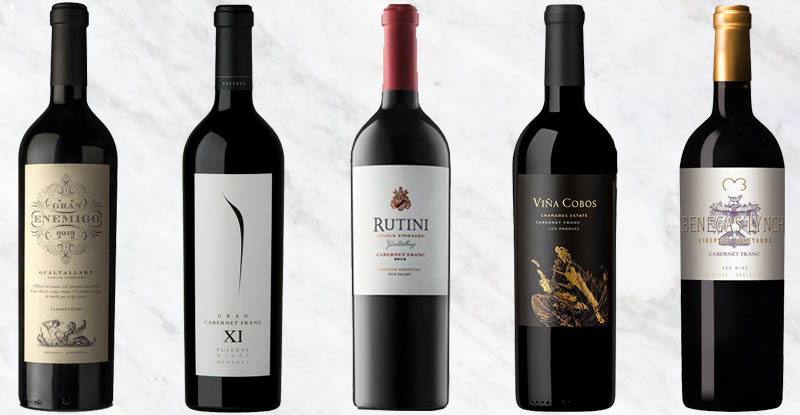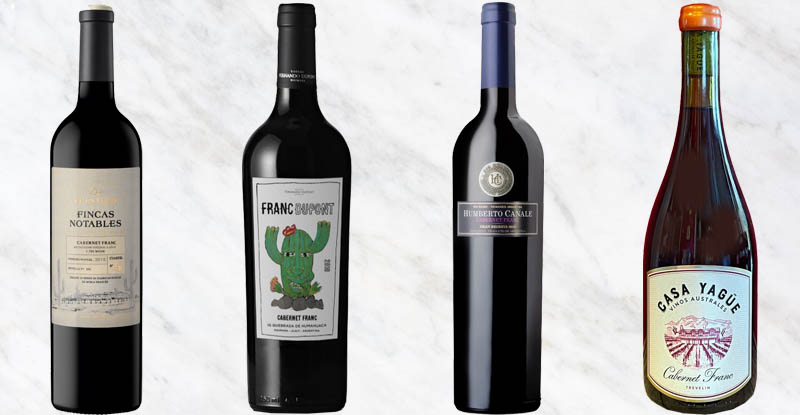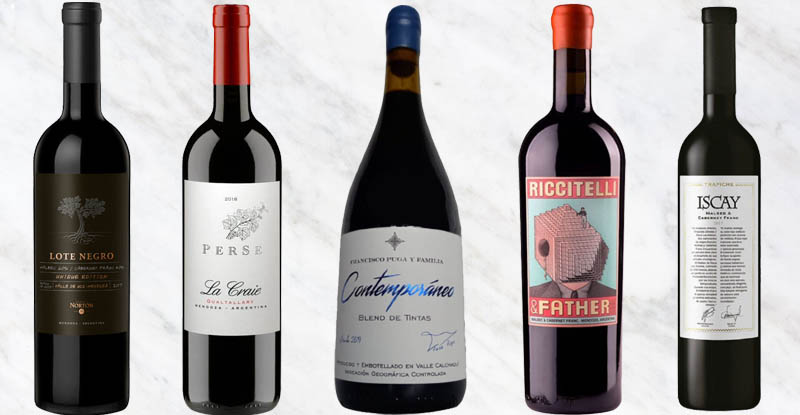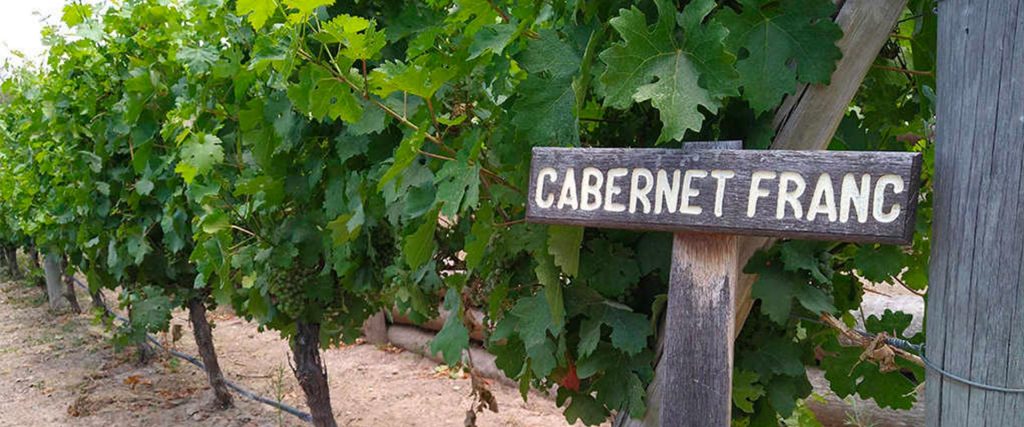One of the most interesting phenomena related to Cabernet Franc from Argentina in recent years is without a doubt how it has seduced some of the most demanding wine lovers on the planet, as well as a score of leading wine writers.
Back in 2016, for the first time ever, an Argentine wine received a 100 point score from Wine Advocate: the 2013 Gran Enemigo Gualtallary, a blend of 85% Cabernet Franc and 15% Malbec. This caught the attention of a number of influential tasters, who began to look at varietals of Cabernet Franc from Argentina with fresh eyes, as well as blends in which the Franc brings a new dimension to the country’s wines.
In general, specialists were enthralled by how diverse these Francs are compared to the same variety in other regions, and how their fresh, herbal character has enhanced many of the labels produced by the world’s leading Malbec producer.
“Cabernet Franc from Argentina develops a fascinating complexity in which the red and dark fruit flavors are enhanced by subtle spice and herbal notes, and plenty of freshness, while on the palate its more subtle than classic reds such as Cabernet Sauvignon, for example,” says Agustina Hanna, Winemaker at Ruca Malen.
You can taste this for yourself in the varietals but also the red blends in which Cabernet Franc’s qualities stand out.
Cabernet Franc from Argentina: the sophisticated green factor
“Cabernet Franc taught us to forgive pyrazine qualities in reds, because they enhance the expressiveness of the wines,” says Daniel Pi, Chief Winemaker at Bemberg Estate Wines.
The oenologist believes that Cabernet Franc from Argentina and the quest to find the ideal ripeness for Mendoza helped drinkers to appreciate fresher, herbal notes, green and red pepper and other details that had been criticized in wines such as Cabernet Sauvignon for years.
Winemakers appreciate Cabernet Franc because it allows them to make refreshing, taut wines that can also be extremely elegant, especially when combined with Malbec.
The Franc Map
Together with Malbec, in Argentina, Cabernet Franc is one of the few varieties to have increased the number of hectares under vine in recent years.
Over the past decade, the surface area planted with Franc has grown by 115% to its current figure of 1569 hectares, of which 81% are to be found in Mendoza, mainly in Luján de Cuyo (20%) and the Uco Valley (45%) which are where the best ranked wines come from.
Of course, it has also expanded in the Pedernal Valley (San Juan), the Calchaquí Valley and even in the Province of Buenos Aires, near the Atlantic Coast.
But Cabernet Franc from Argentina can also be found grown in the most extreme areas of the country such as the Quebrada de Humahuaca in Jujuy, where vines grow at a height of 9000 feet, as well as Patagonia, where it is grown in Trevelin, one of the most southerly wine regions in the world in the Province of Chubut.
A varietal with several faces
When discussing the character of Cabernet Franc in Argentina it’s important to take into account the continental vineyards and their location in the Andean foothills. This allows Argentine wineries to produce a distinctive style for the variety as the grapes ripen while preserving excellent natural acidity, good structure and attractive aromatic complexity.
But in addition to these general qualities, the fact that vineyards of Luján de Cuyo produce very different wines to those of the Uco Valley is evidence of an unsuspected versatility. For instance, “in Gualtallary, it takes on a mineral, taut profile created by the cool climate at high altitude (about 4200 feet), while in Agrelo it develops greater volume and elegance,” says Diana Fornasero, the oenologist at Viña Cobos.
It is this versatility that allows for the production of fresh, classical Bordelais style wines such as the El Gran Enemigo collection, Rutini Single Vineyard Gualtallary, Benegas Lynch, Viña Cobos Chañares Estate and Pulenta Estate Gran Cabernet Franc.

However, there are also those that present an identity more closely related to freshness and the fluid palate of the Loire valley such as Zorzal Eggo Franco, Zuccardi Polígonos del Valle de Uco San Pablo, Espontáneo By Lui Wines, Argento Single Vineyard Agrelo, and Mundo Revés Cuvee Les Calcaries.
Of course, there are also excellent examples of Cabernet Francs from other wine regions such as the classical Humberto Canale Gran Reserva from Río Negro; one made by Fernando Dupont in Jujuy; El Esteco Series Notables from the Calchaquí Valleys and a new arrival, Casa Yagüe, made with grapes from the most southerly Cabernet Franc vineyard in Argentina.

Mauricio Vegetti at Lui Wines shares his opinion of the variety: “I think there are plenty of reasons to regard Argentine Cabernet Franc as the second most successful variety in the country after Malbec. Its malleability in different terroirs and good yields make it as multifaceted as Malbec. The grape produces bold products in different places and offers every chance of achieving good ripeness.”
Strength in togetherness
Argentine wineries often use Cabernet Franc in their blends, and it achieves particularly excellent results when mixed with Malbec.
“It’s wonderful how Malbec and Cabernet Franc complement one another,” says Agustina Hanna. “The Franc adds character but also freshness and energy to Malbec and the results are always exquisite.”
There are many examples of the success of the pairing in every price segment, for instance: La Craire de Per Se, Riccitelli & Father, and Trapiche Iscay, which are all 70% Malbec and 30% Cabernet Franc; Contemporáneo Blend de los Valles Calchaquíes (55% Cabernet Franc, 30% Malbec and 15% Merlot) from the Winemaker Paco Puga; and Norton Lote Negro Unique Edition, which is a blend of 65% Malbec and 35% Cabernet Franc.

It’s easy to see why the whole world is talking about Cabernet Franc from Argentina and why many producers elsewhere have been inspired to reassess the variety. It has extraordinary potential, as Argentine winemakers have been showing for years.



